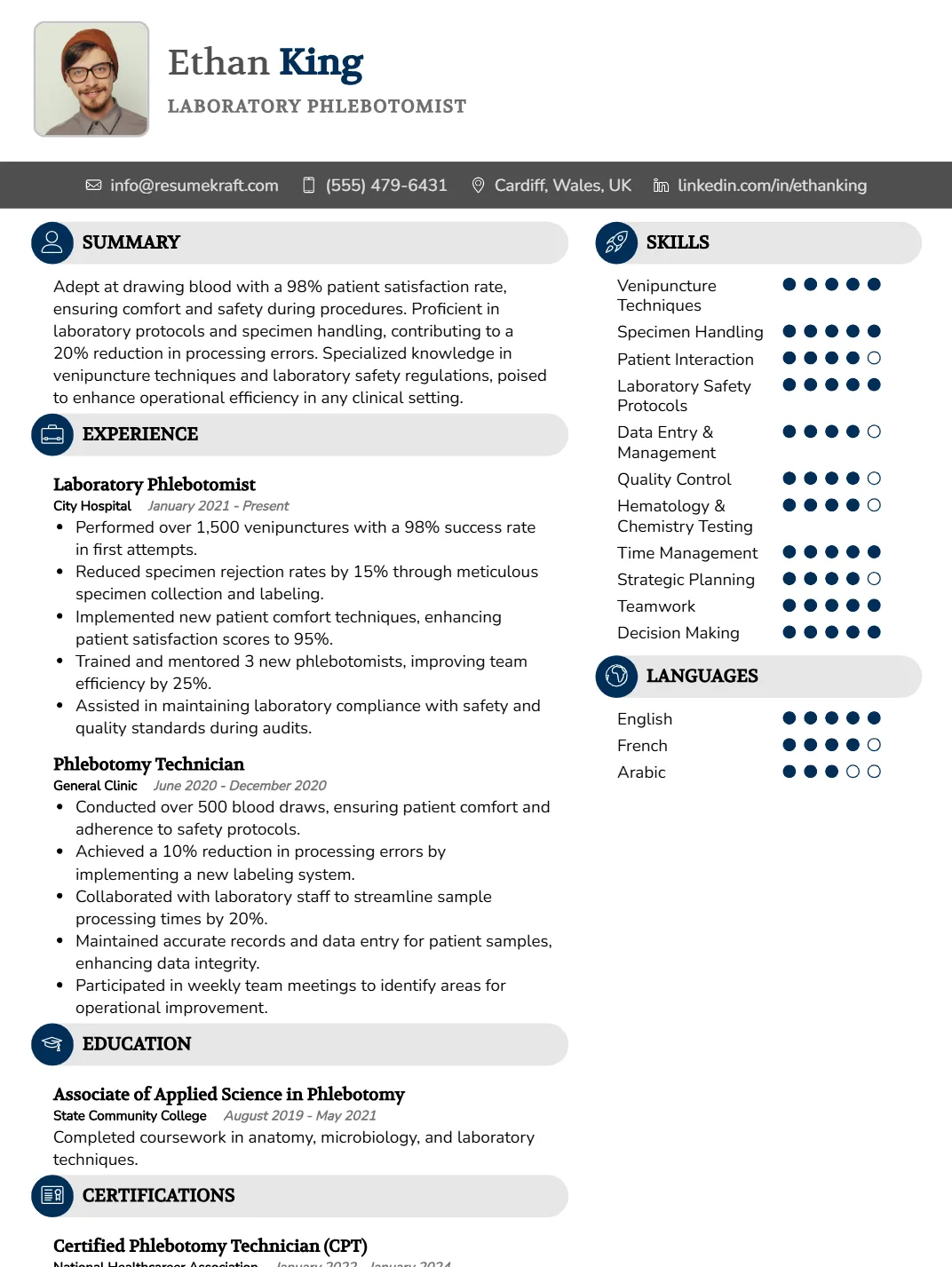
The role of a Phlebotomist is vital in the healthcare industry, as these professionals are responsible for drawing blood from patients for tests, transfusions, or donations. This crucial procedure not only aids in diagnosing medical conditions but also plays a significant role in patient care and safety. With the increasing demand for healthcare services, the need for skilled Phlebotomists is more pronounced than ever, making this profession a promising career choice. This article aims to provide insights into effective resume writing specifically tailored for aspiring Phlebotomists, helping them stand out in a competitive job market.
- Phlebotomist resume examples
- How to format a Phlebotomist resume
- How to write your Phlebotomist resume experience
- How to list your hard skills and soft skills on your resume
- How to list your certifications and education on your resume
- How to write your Phlebotomist resume summary or objective
- Additional sections for a Phlebotomist resume
- Key takeaways for writing a professional Phlebotomist resume
- Frequently Asked Questions
Phlebotomist resume examples
Phlebotomist resume examples serve as essential tools for job seekers aiming to secure positions in the healthcare field. These examples illustrate effective formatting, language, and content tailored to the unique skills and qualifications required for phlebotomy roles. By analyzing these samples, candidates can better understand how to highlight their experience, certifications, and competencies, ultimately enhancing their chances of standing out in a competitive job market.
Medical Laboratory Technician Resume
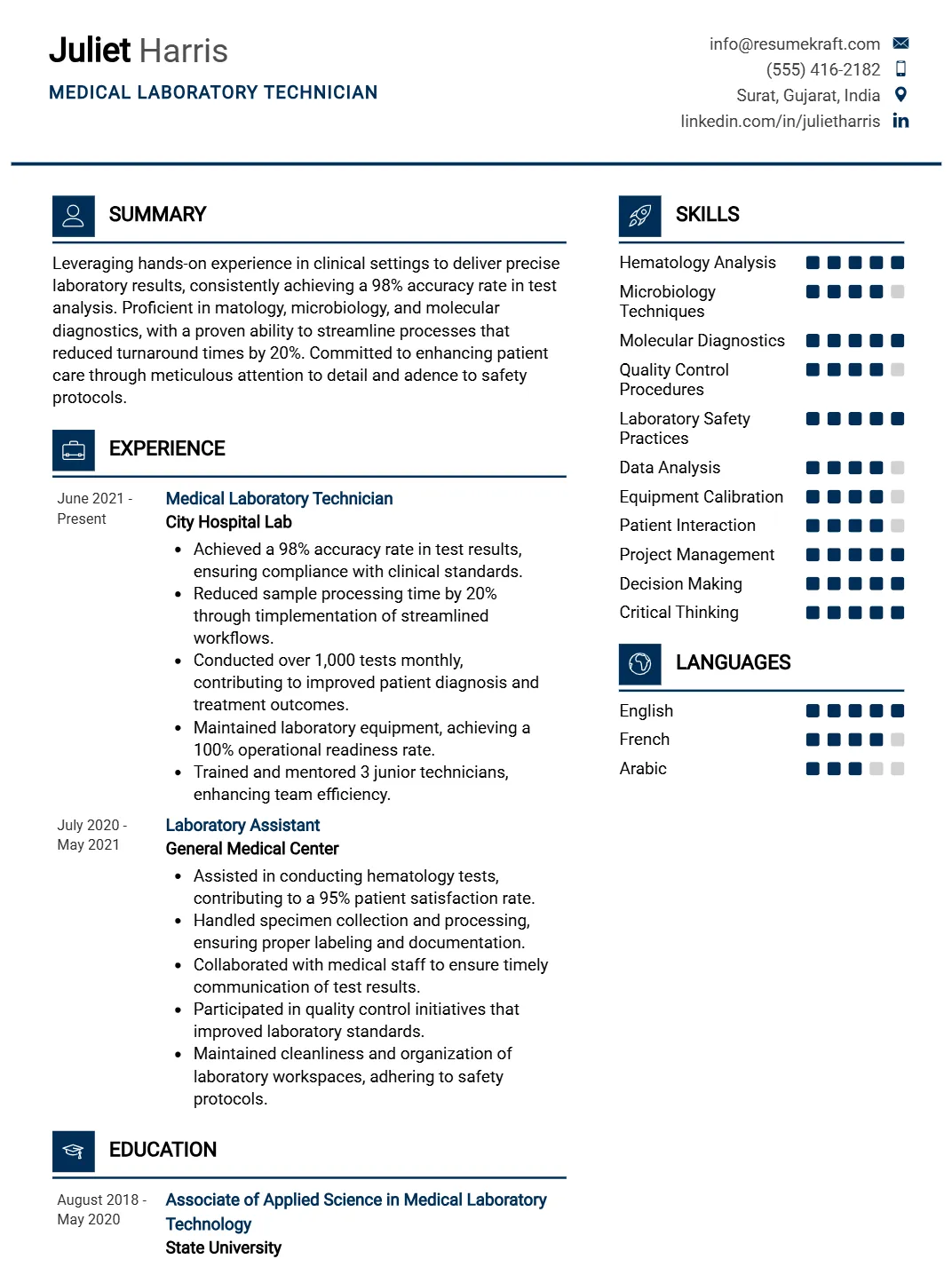
Why This Resume Works
This resume effectively highlights the candidate’s relevant skills and five years of experience, showcasing expertise in hematology analysis and microbiology techniques essential for a Medical Laboratory Technician. Its clear format emphasizes key competencies, ensuring easy readability for hiring managers. The structured layout enhances ATS compatibility by incorporating industry-specific keywords like “molecular diagnostics” and “quality control procedures.” Furthermore, strategically presented achievements demonstrate the candidate’s contributions to laboratory efficiency and safety, making it a compelling application for this position.
Laboratory Assistant Resume
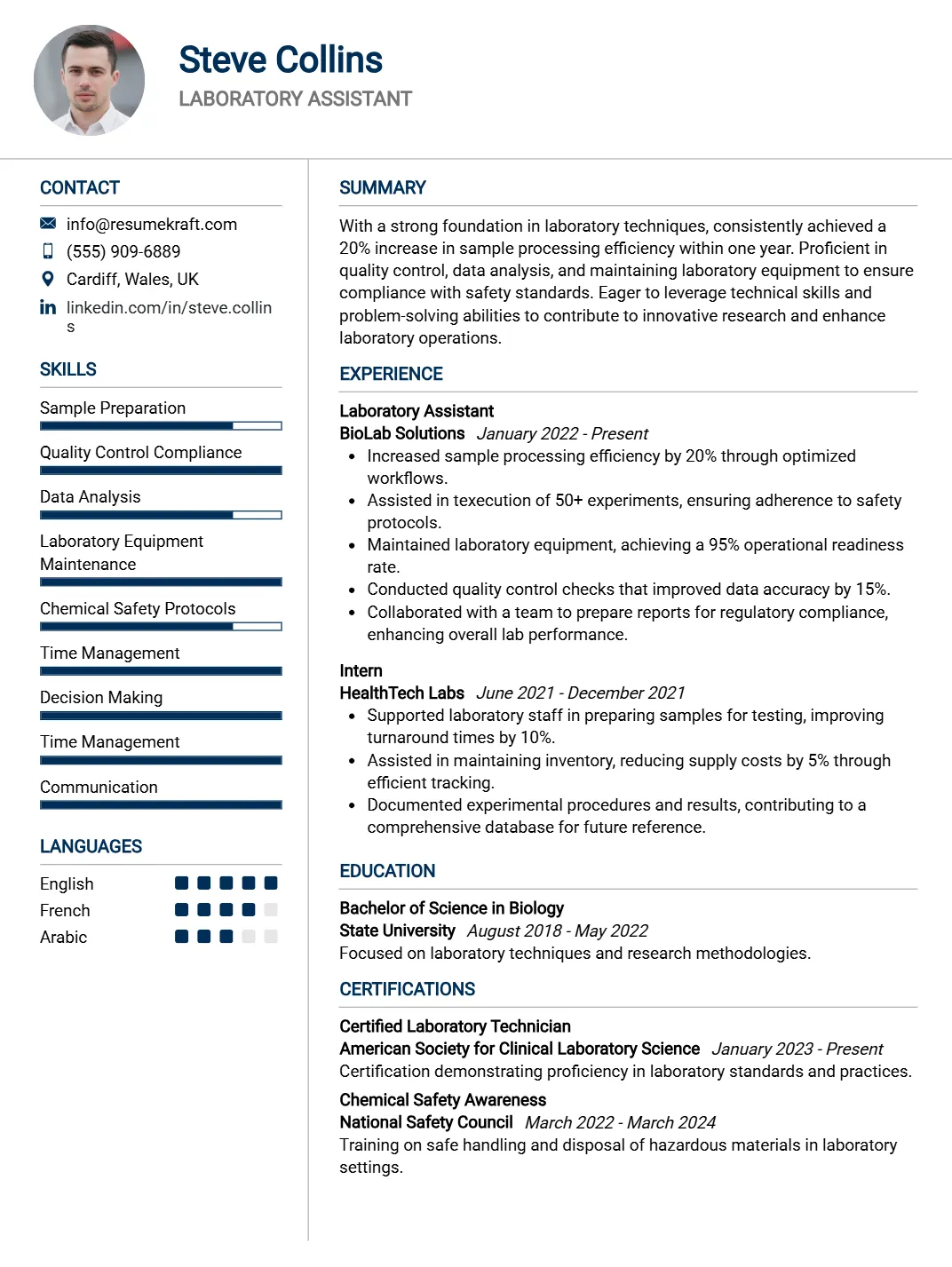
Why This Resume Works
This resume effectively highlights relevant skills such as sample preparation and quality control compliance, directly aligning with the Laboratory Assistant role. With three years of hands-on experience, it demonstrates practical knowledge essential for laboratory settings. The clear format and structured layout enhance readability, ensuring key information is easily accessible to hiring managers. Additionally, the use of industry-specific keywords boosts ATS compatibility, increasing visibility during candidate screening.
Clinical Laboratory Technician Resume
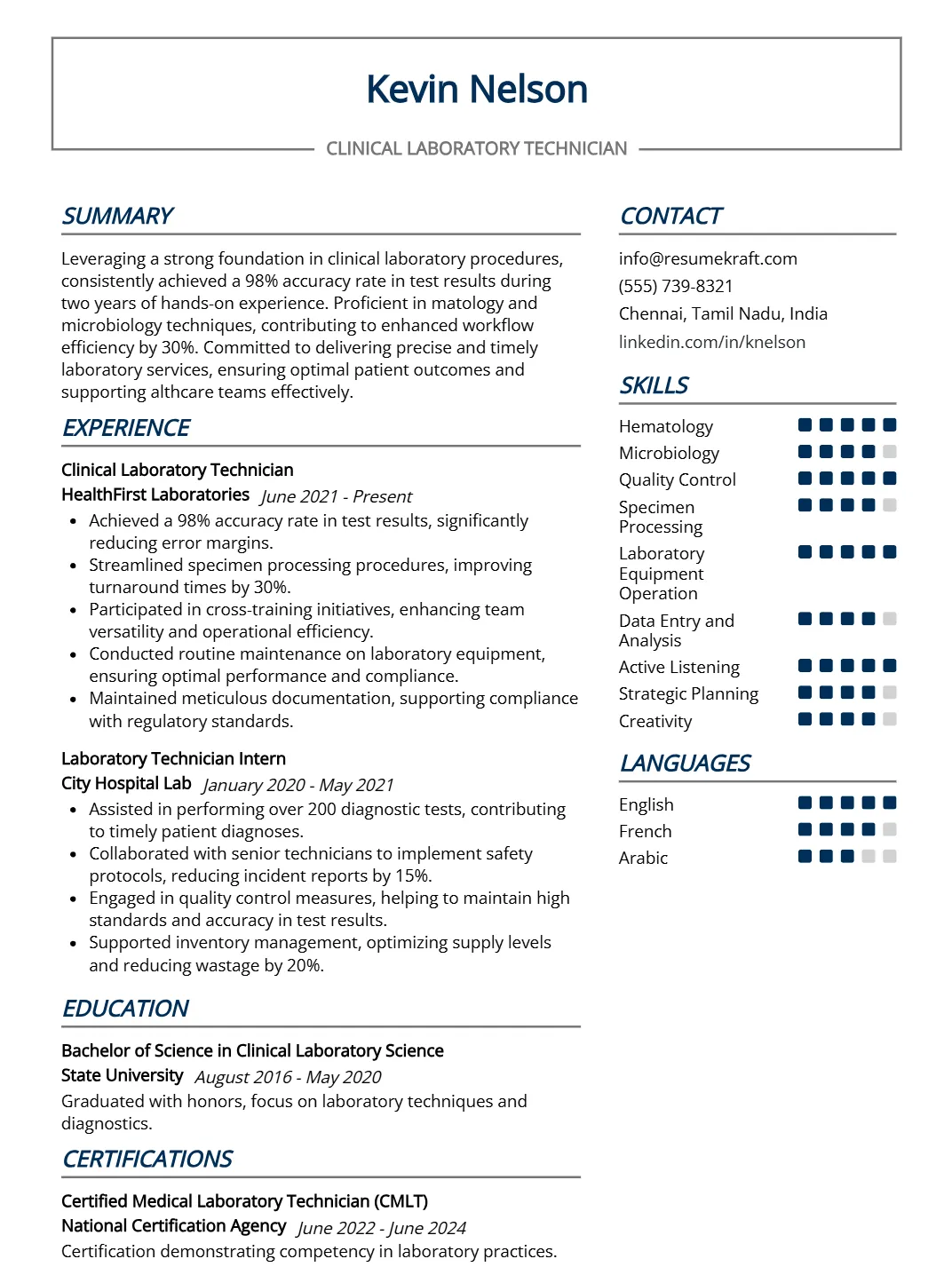
Why This Resume Works
This resume effectively showcases the candidate’s qualifications for a Clinical Laboratory Technician position by prominently highlighting relevant key skills such as hematology and microbiology, crucial for laboratory work. With approximately five years of experience in both technician roles, it demonstrates a solid foundation in specimen processing and quality control. The structured format enhances readability, ensuring ATS compatibility through the use of industry-specific keywords. Additionally, strategic presentation of achievements related to laboratory equipment operation emphasizes the candidate’s ability to contribute to high-quality lab results.
Medical Assistant Resume
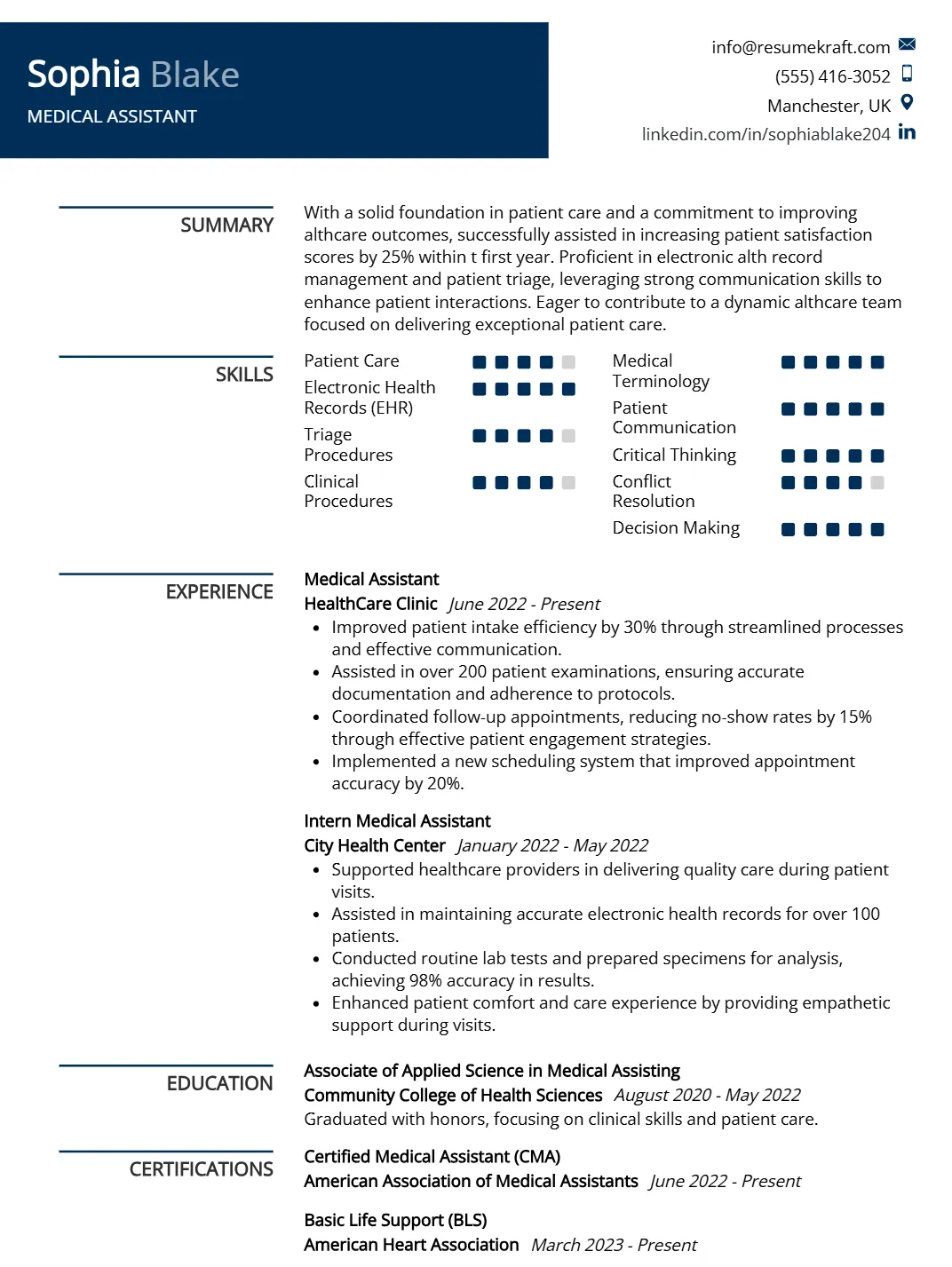
Why This Resume Works
This resume effectively showcases the candidate’s qualifications for a Medical Assistant position by highlighting relevant skills such as Patient Care, EHR proficiency, and clinical procedures. With three years of hands-on experience, including an internship, it demonstrates practical knowledge essential for the role. The structured format ensures clarity and easy readability, enhancing ATS compatibility through the strategic use of keywords specific to the medical field. Additionally, presenting quantifiable achievements related to patient care further strengthens the candidate’s appeal to potential employers.
Certified Nursing Assistant (CNA) Resume
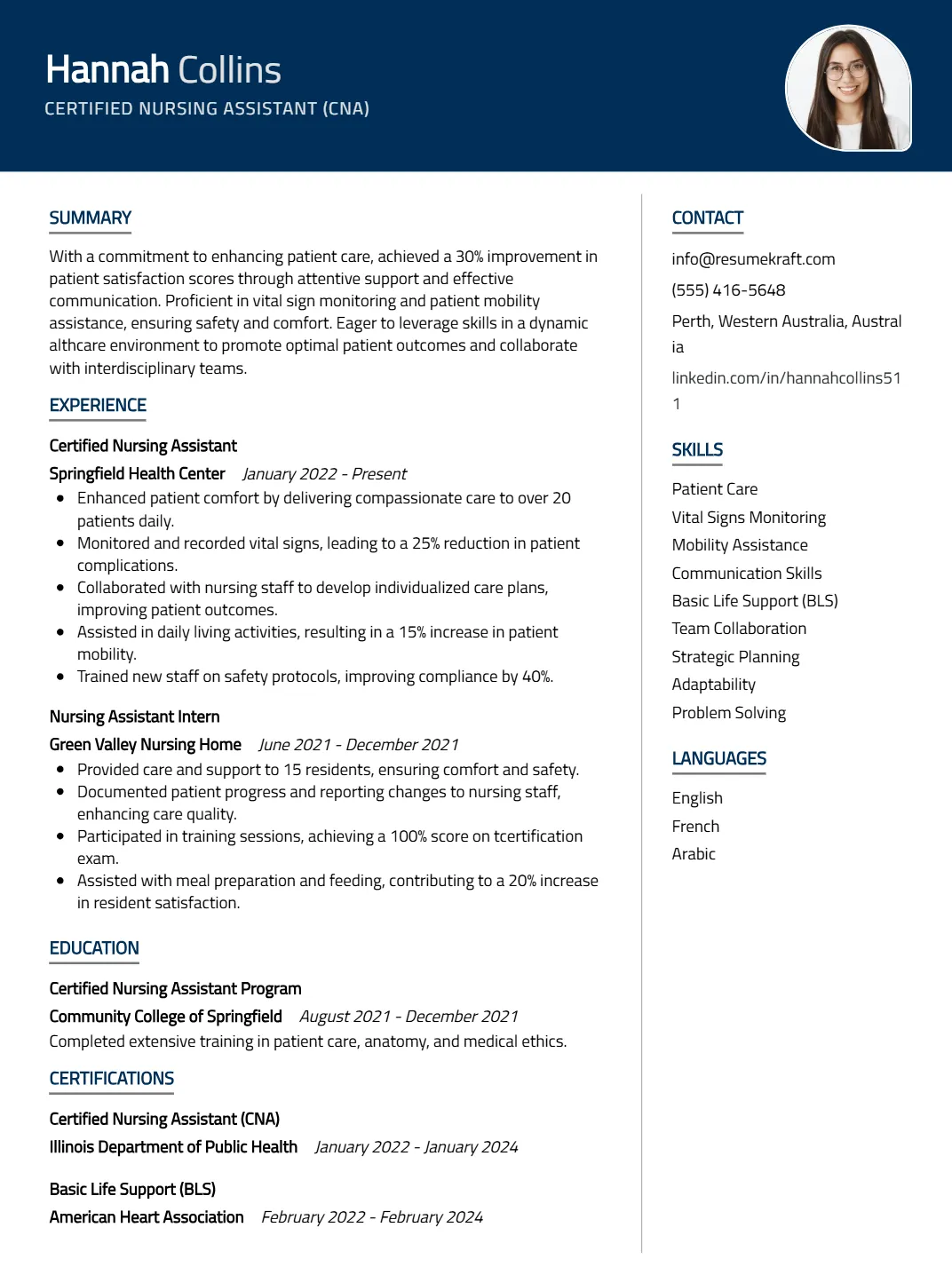
Why This Resume Works
This resume effectively highlights the candidate’s relevant skills and three years of hands-on experience as a Certified Nursing Assistant, showcasing essential capabilities like patient care and vital signs monitoring. The structured format allows for quick scanning, ideal for busy hiring managers. Its use of industry-specific keywords enhances ATS compatibility, ensuring it reaches decision-makers. Additionally, the strategic presentation of achievements emphasizes measurable impacts on patient care, making this resume compelling for prospective employers in the healthcare field.
Patient Care Technician Resume
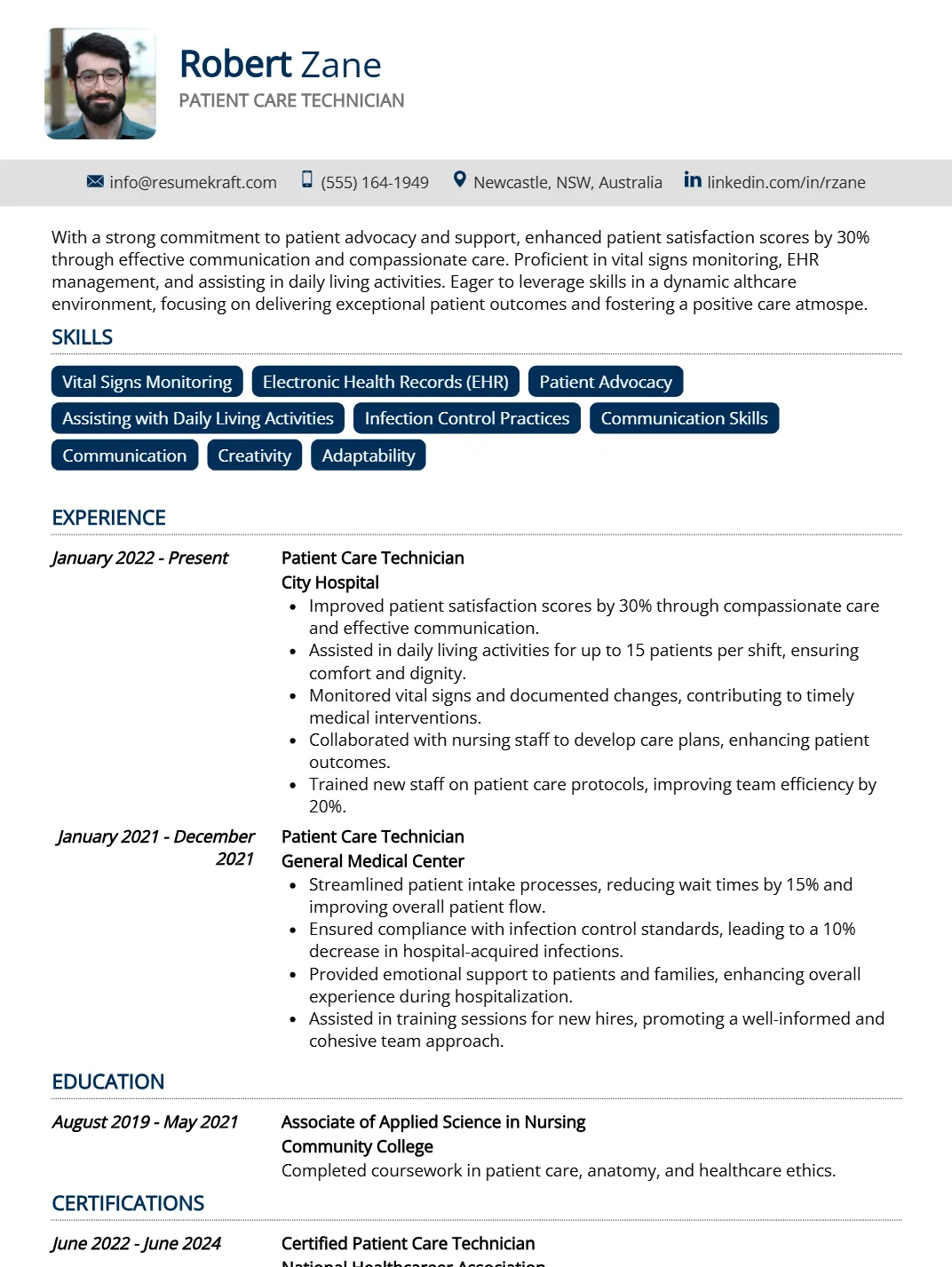
Why This Resume Works
This resume effectively highlights the candidate’s relevant skills and extensive experience as a Patient Care Technician, emphasizing vital signs monitoring and patient advocacy. The clear format allows for easy readability, ensuring that hiring managers can quickly assess qualifications. Its structured layout also enhances ATS compatibility by incorporating industry-specific keywords like “EHR” and “infection control practices.” Additionally, the strategic presentation of achievements showcases the candidate’s commitment to quality patient care, making this resume particularly appealing for this position in healthcare settings.
Specimen Collector Resume

Why This Resume Works
This resume effectively highlights the candidate’s extensive 14 years of experience as a Specimen Collector, showcasing key skills such as phlebotomy and laboratory safety protocols crucial for the role. The structured format emphasizes relevant expertise, making it easy for hiring managers to identify qualifications. Additionally, the use of industry-specific keywords enhances ATS compatibility, ensuring visibility in applicant tracking systems. Strategic presentation of achievements related to quality assurance and patient care further demonstrates the candidate’s commitment to excellence in specimen collection, making this resume stand out.
Laboratory Phlebotomist Resume

Why This Resume Works
This resume is effective for a Laboratory Phlebotomist position due to its clear emphasis on relevant skills like venipuncture techniques and specimen handling, showcasing over four years of hands-on experience. The structured format enhances readability, ensuring key qualifications stand out. By incorporating industry-specific keywords, it aligns with ATS requirements, increasing visibility in applicant tracking systems. Additionally, the strategic presentation of achievements highlights successful patient interactions and adherence to laboratory safety protocols, making this resume particularly compelling for employers seeking qualified candidates in phlebotomy.
Pathology Assistant Resume
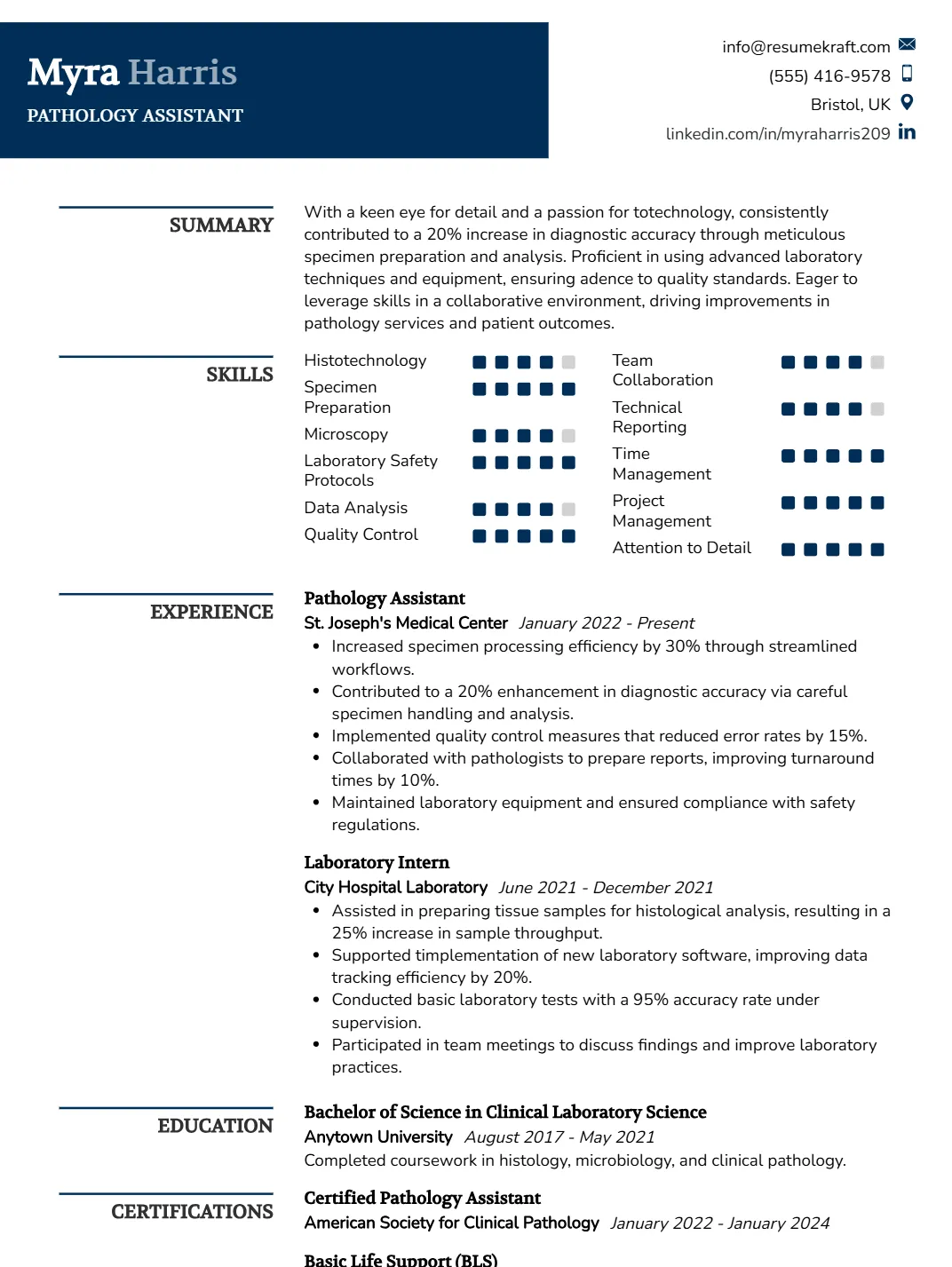
Why This Resume Works
This resume effectively highlights the candidate’s relevant skills in histotechnology, specimen preparation, and microscopy, essential for a Pathology Assistant role. Their three years of experience, including a Laboratory Intern position, demonstrates practical knowledge and familiarity with laboratory safety protocols. The structured format aids readability, ensuring key information is easily accessible for hiring managers. Additionally, it is ATS-friendly by incorporating industry-specific keywords. Strategic presentation of achievements further emphasizes their ability to contribute significantly to pathology workflows, making them an attractive candidate for this position.
Health Care Assistant Resume
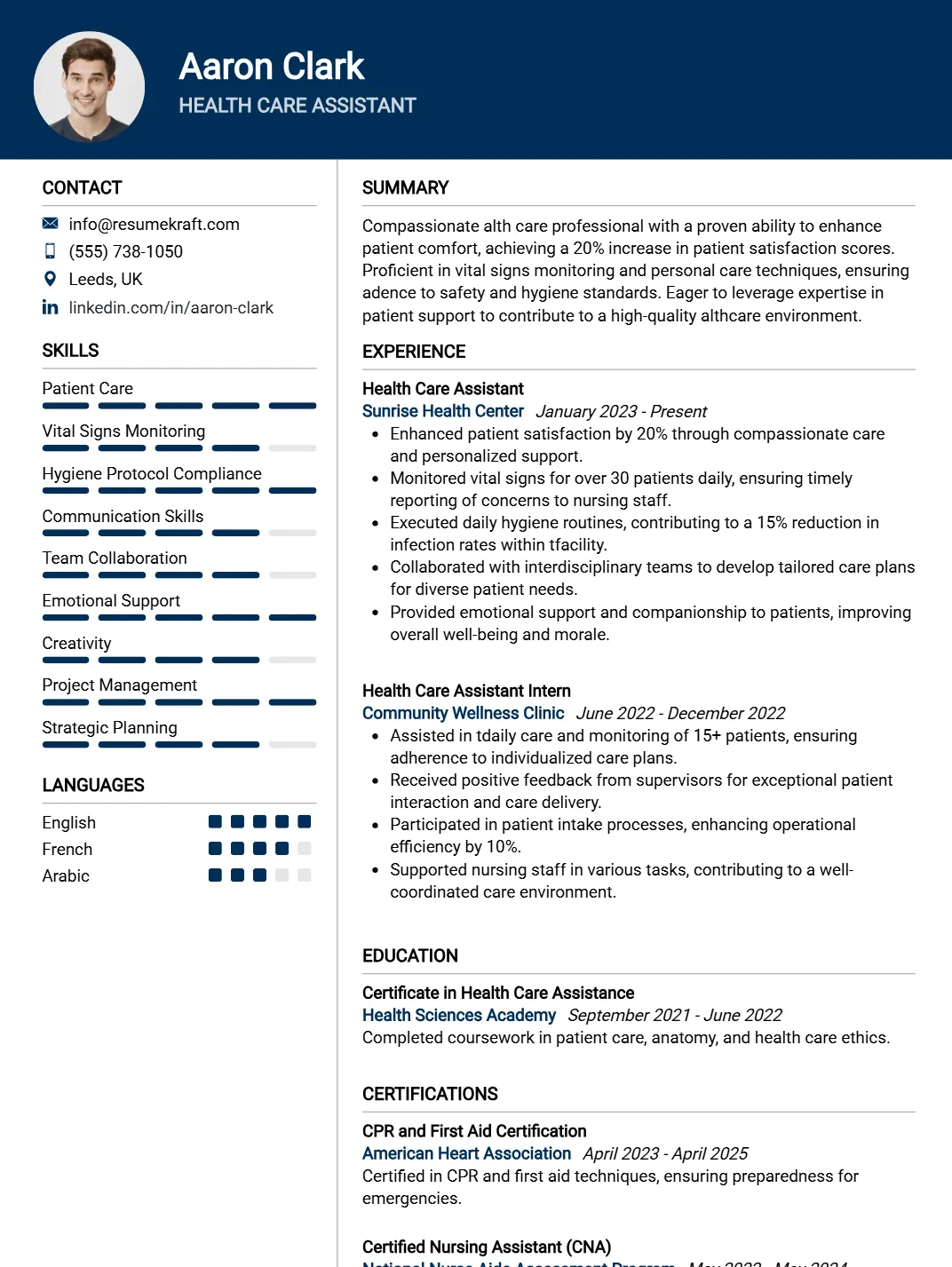
Why This Resume Works
This resume effectively highlights the candidate’s relevant skills, such as patient care and vital signs monitoring, which are crucial for a Health Care Assistant role. With two years of experience as both a Health Care Assistant and Intern, it showcases practical expertise. The structured format ensures clarity, making it easy for hiring managers to identify key qualifications. Additionally, the resume is optimized for ATS compatibility by incorporating industry-specific keywords.
Blood Donor Technician Resume
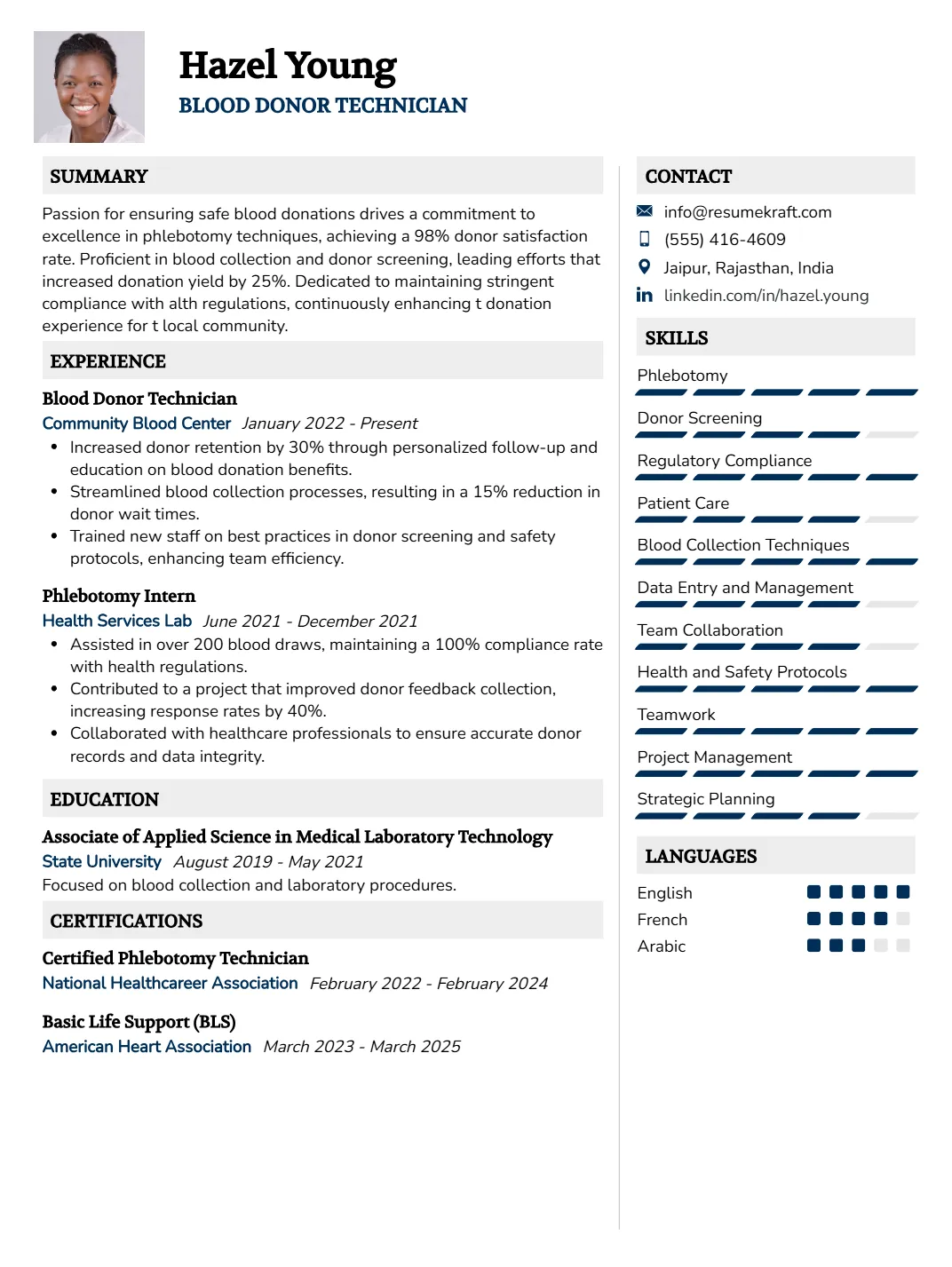
Why This Resume Works
This resume effectively targets the Blood Donor Technician position by prominently showcasing relevant skills such as phlebotomy and donor screening, directly aligning with job requirements. With three years of hands-on experience, it emphasizes practical knowledge in blood collection techniques and regulatory compliance, making the candidate stand out. The clear format enhances readability for hiring managers and ATS compatibility. Additionally, strategic presentation of achievements related to patient care reinforces the candidate’s commitment to safety and quality in blood donation practices, further enhancing their suitability for the.
Medical Office Assistant Resume
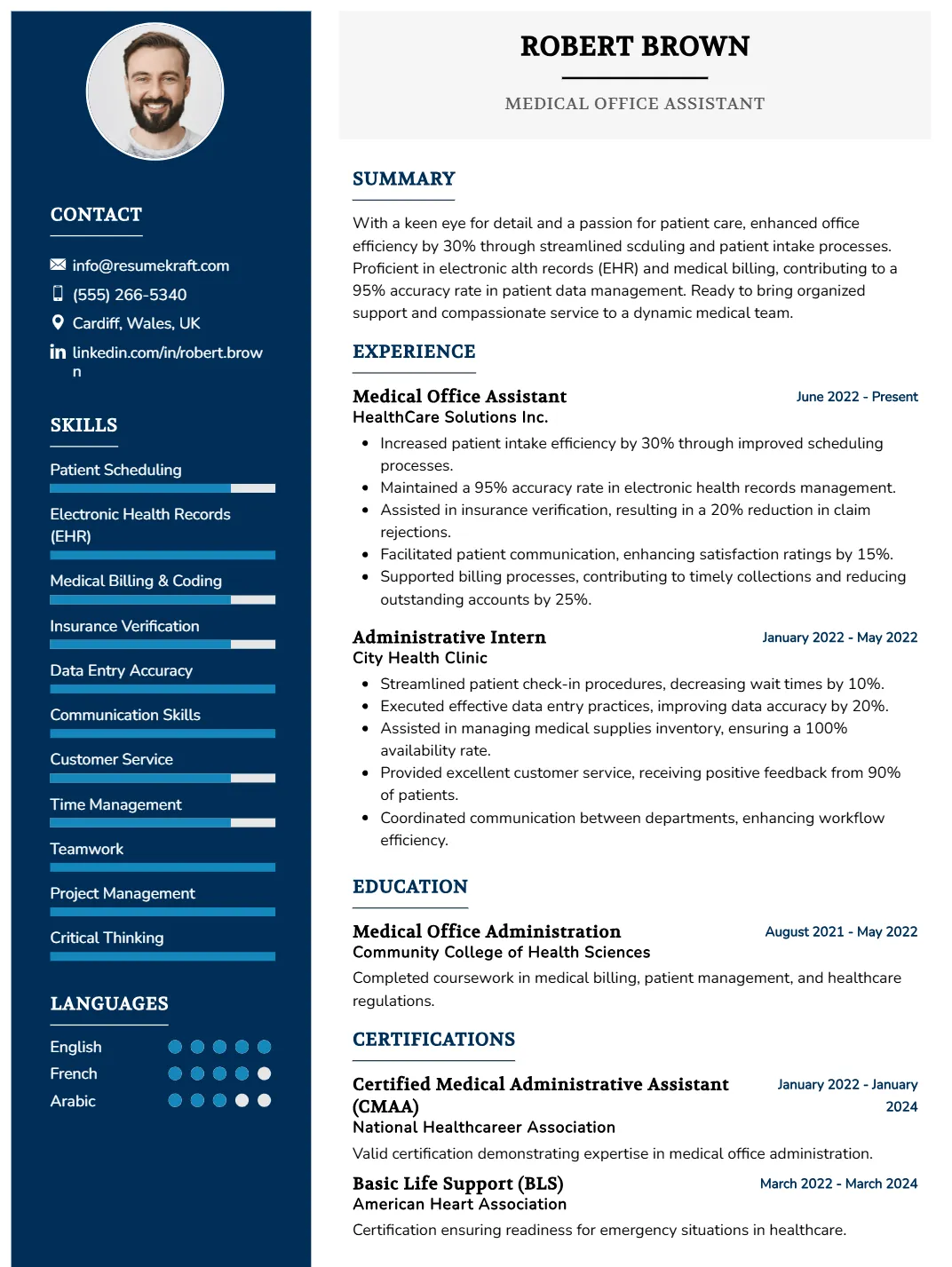
Why This Resume Works
This resume effectively showcases the candidate’s relevant skills and experience for a Medical Office Assistant position, highlighting key abilities such as patient scheduling and EHR management. Its structured format enhances readability, ensuring quick access to important information for hiring managers. The use of industry-specific keywords ensures ATS compatibility, increasing visibility during initial screenings. Additionally, strategic presentation of achievements in medical billing and coding emphasizes the candidate’s proficiency in crucial tasks, making this resume a strong contender for the role.
Diagnostic Technician Resume
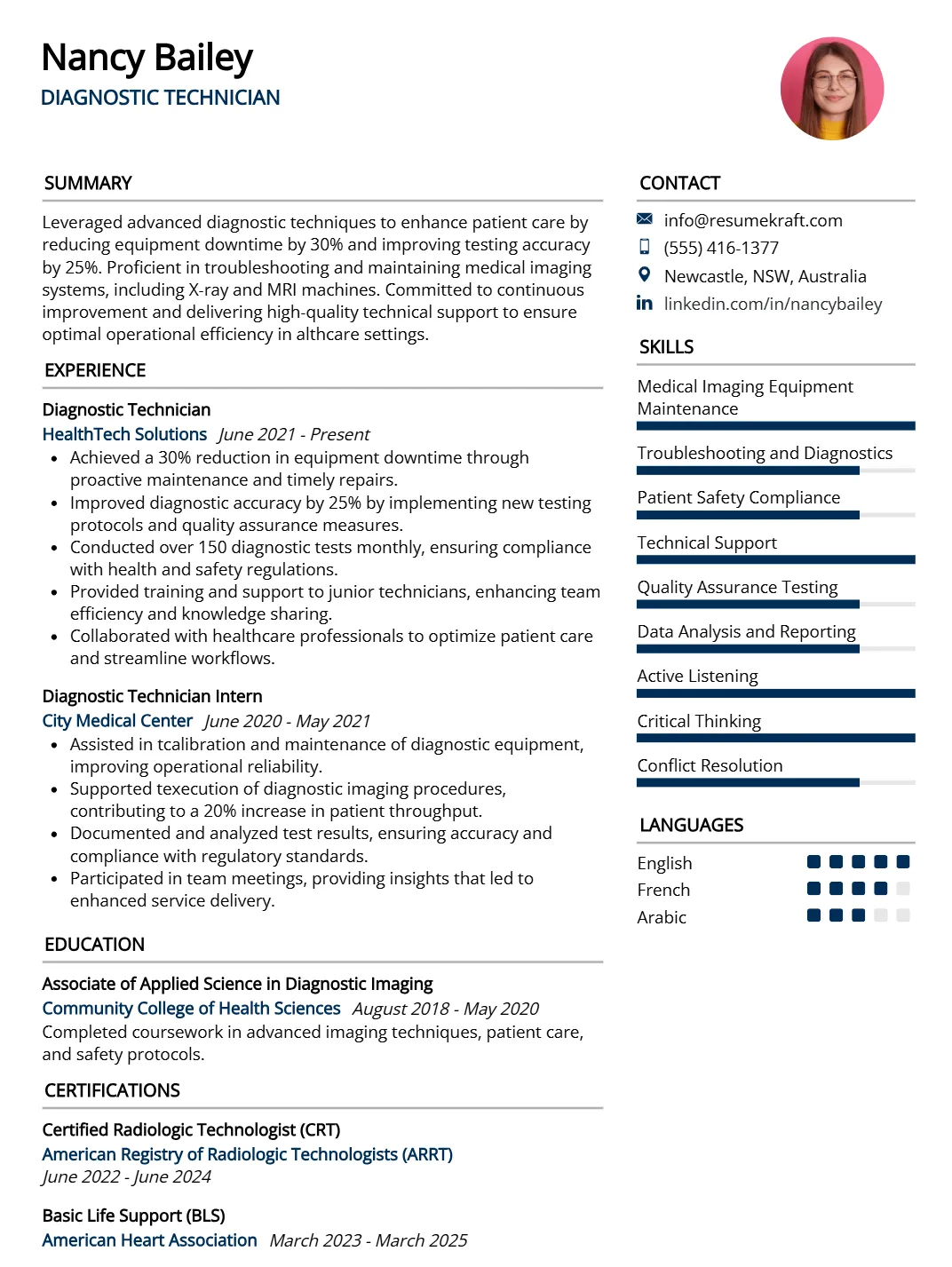
Why This Resume Works
This resume effectively highlights the candidate’s relevant skills, such as medical imaging equipment maintenance and troubleshooting, crucial for a Diagnostic Technician role. With five years of experience, including an internship, it showcases practical knowledge that enhances credibility. The clear format and structured sections ensure easy readability for hiring managers and ATS compatibility. Additionally, strategic presentation of achievements in patient safety compliance and quality assurance testing emphasizes the candidate’s commitment to industry standards, making this resume particularly compelling for the position.
Lab Specimen Processor Resume
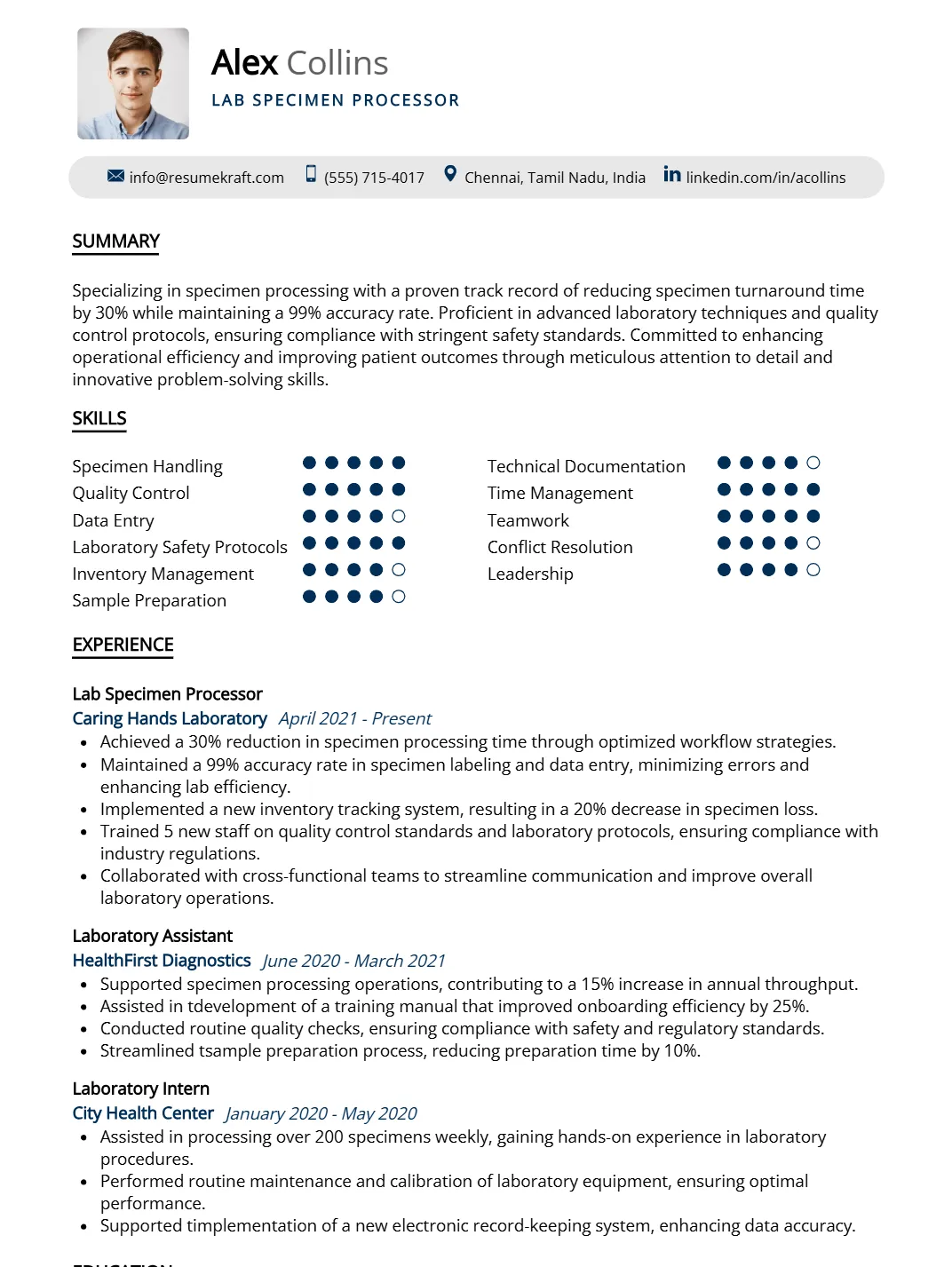
Why This Resume Works
This resume effectively highlights relevant skills such as specimen handling and laboratory safety protocols, directly aligning with the Lab Specimen Processor position. With five years of experience in similar roles, it demonstrates a solid background in quality control and inventory management. The clear format enhances readability for hiring managers and ensures ATS compatibility by incorporating industry-specific keywords. Additionally, strategic presentation of achievements showcases the candidate’s ability to improve efficiency and maintain high standards, making them an ideal fit for this role.
Venipuncture Technician Resume
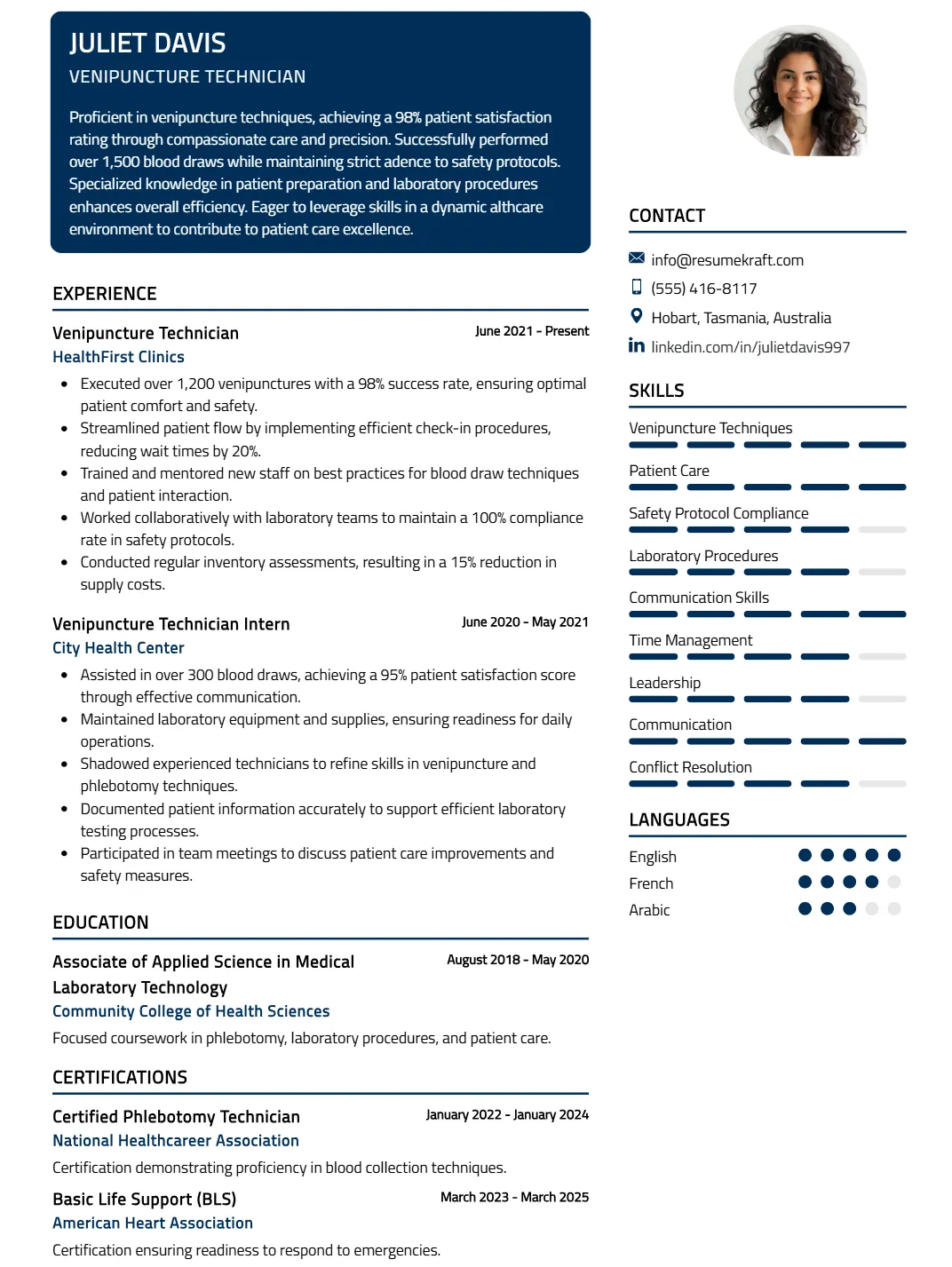
Why This Resume Works
This resume effectively positions the candidate for a Venipuncture Technician role by highlighting relevant skills such as venipuncture techniques and patient care, directly aligning with job requirements. With approximately five years of experience, including internships, it showcases a strong foundation in laboratory procedures and safety protocol compliance. The clear format enhances readability for hiring managers and ensures ATS compatibility by incorporating industry-specific keywords.
How to format a Phlebotomist resume
Proper formatting is crucial for a Phlebotomist resume, as it ensures clarity and readability, allowing hiring managers to quickly identify relevant skills and experiences. A well-structured resume format can significantly enhance your chances of landing an interview.
- Use a clean, professional font such as Arial or Calibri in 10-12 point size to maintain readability and ensure that your resume appears polished and easy to navigate.
- Organize your resume into clear sections like Summary, Skills, Experience, and Education, using bold headings to guide the reader through your qualifications and relevant experience in phlebotomy.
- Bullet points should begin with action verbs and quantify your achievements wherever possible, such as “Performed over 100 successful venipunctures weekly,” to demonstrate your capabilities effectively.
- Keep your resume to one page if you have less than 10 years of experience; this forces you to prioritize the most relevant and impactful information that aligns with the phlebotomy role.
- Include relevant certifications and licenses, such as CPR or Phlebotomy Certification, in a dedicated section to highlight your qualifications and show your commitment to professional development in the field.
How to write your Phlebotomist resume experience
Effectively presenting work experience on a Phlebotomist resume is crucial, as this section allows you to showcase your hands-on skills and knowledge in blood collection and patient interaction. Employers are looking for specific accomplishments, the volume of procedures performed, and your ability to adhere to safety protocols, which can significantly impact their hiring decision.
A well-crafted experience section should not only highlight your technical abilities but also demonstrate your commitment to patient care and teamwork. By quantifying your achievements, you can provide potential employers with a clear picture of your capabilities and how you can contribute to their organization.
Worked as a Phlebotomist and took blood samples. Helped patients and kept records.
Performed over 1,000 venipunctures and capillary draws, ensuring patient comfort and safety while maintaining a 98% accuracy in sample collection for laboratory testing.
How to list your hard skills and soft skills on your resume
The importance of both hard and soft skills on a Phlebotomist resume cannot be overstated. Hard skills, such as technical proficiency in blood collection techniques, are essential for performing the job accurately and safely. Meanwhile, soft skills like communication and empathy enhance patient interactions, ensuring a positive experience during what can be a stressful procedure. A balanced combination of these skills not only increases a candidate’s employability but also contributes to better patient care and team dynamics in healthcare settings.
Hard Skills:
- Venipuncture: Proficient in drawing blood from veins with precision.
- Capillary collection: Skilled in collecting blood samples via fingerstick.
- Blood sample handling: Knowledgeable in proper storage and transportation of samples.
- Lab safety protocols: Familiar with safety standards and practices in a laboratory setting.
- Equipment maintenance: Ability to maintain and troubleshoot phlebotomy equipment.
- Infection control: Trained in practices to prevent contamination and infection.
- Patient identification: Expertise in verifying patient identities before procedures.
- Record keeping: Competent in maintaining accurate patient records and documentation.
- Blood type determination: Skilled in conducting blood type testing.
- Emergency response: Prepared to handle medical emergencies during procedures.
- Data entry: Proficient in entering patient data into electronic health records.
- Phlebotomy certification: Holder of relevant certifications in phlebotomy.
- Specimen processing: Knowledgeable in processing and preparing specimens for analysis.
- Quality control: Understanding of quality assurance processes in laboratory settings.
- Patient monitoring: Capable of observing and reporting patient conditions during procedures.
Soft Skills:
- Communication: Excellent verbal skills for explaining procedures to patients.
- Empathy: Ability to understand and relate to patients’ feelings and concerns.
- Attention to detail: Strong focus on accuracy in procedures and record-keeping.
- Teamwork: Collaborative mindset for working effectively with healthcare teams.
- Time management: Efficient in managing time to minimize patient wait times.
- Problem-solving: Quick thinker in addressing issues during blood collection.
- Patience: Ability to remain calm and composed, especially with anxious patients.
- Adaptability: Flexible in adjusting to changes in procedures or environments.
- Customer service: Committed to providing a positive experience for patients.
- Interpersonal skills: Strong ability to build rapport with patients and colleagues.
- Stress management: Capability to handle high-pressure situations with ease.
- Conflict resolution: Skilled in managing and resolving conflicts smoothly.
- Cultural competence: Understanding and respect for diverse patient backgrounds.
- Active listening: Attentive listener, ensuring patient needs are fully understood.
- Professionalism: Maintains a high standard of ethics and behavior in the workplace.
How to list your certifications and education on your resume
When presenting certifications and education on a Phlebotomist resume, it’s essential to highlight relevant qualifications clearly and concisely. Include your highest level of education, such as a high school diploma or a specialized phlebotomy certificate. Be sure to list the certification name, awarding body, and the date of completion. This information demonstrates your commitment to the field and ensures that potential employers see your qualifications at a glance.
Additionally, consider including any ongoing education or specialized training relevant to phlebotomy, such as courses in blood collection techniques or patient interaction. Highlighting certifications from recognized organizations, such as the National Phlebotomy Association (NPA) or the American Society for Clinical Pathology (ASCP), can further strengthen your resume and showcase your expertise.
Got certified in phlebotomy. Went to school for a while. Education is important.
Certified Phlebotomy Technician (CPT), National Phlebotomy Association, 2022. Associate Degree in Health Sciences, City College, 2021.
How to write your Phlebotomist resume summary or objective
A strong resume summary or objective is crucial for a Phlebotomist position as it serves as the first impression of your skills and career aspirations. A summary highlights your qualifications and relevant experience, making it ideal for those with a solid background in the field. Conversely, an objective statement focuses on your career goals and is best for entry-level candidates seeking their first role in phlebotomy.
Looking for a job in a medical facility where I can use my skills. I have some experience in blood collection.
Detail-oriented Phlebotomist with 3 years of experience in blood collection and patient care, seeking to leverage expertise in a dynamic healthcare setting to ensure accurate and safe specimen collection.
Additional sections for a Phlebotomist resume
Including additional sections in a Phlebotomist resume can significantly enhance your application by showcasing relevant skills, certifications, and experiences that set you apart from other candidates. These sections provide a more comprehensive view of your qualifications and dedication to the field.
- Certifications: Highlighting certifications such as CPR or Phlebotomy Technician credentials demonstrates your commitment to professional standards and ensures you meet industry requirements, making you a more attractive candidate.
- Professional Affiliations: Listing memberships in professional organizations, like the National Phlebotomy Association, reflects your dedication to ongoing education and networking within the industry, indicating a proactive approach to your career.
- Relevant Coursework: Including specialized training or relevant coursework in areas like anatomy or medical terminology shows your foundational knowledge, which is critical for effective patient interaction and blood collection procedures.
- Volunteer Experience: Showcasing volunteer work in healthcare settings emphasizes your hands-on experience and compassion, illustrating your commitment to patient care and your ability to work well under pressure.
- Awards and Recognition: Mentioning any awards or recognitions received for your work in phlebotomy or patient care highlights your excellence and can differentiate you from other candidates who may have similar qualifications.
Key takeaways for writing a professional Phlebotomist resume
- Highlight relevant certifications, such as CPR and phlebotomy training, to demonstrate your qualifications and expertise in the field.
- Use action verbs and quantifiable achievements in your experience section to showcase your impact and efficiency as a phlebotomist.
- Utilize resume templates designed for healthcare professionals to create a polished and organized layout that emphasizes your skills and experience.
- Incorporate soft skills like communication and empathy, as they are crucial for patient interactions and ensuring a positive experience during blood draws.
- Consider using an ai resume builder for personalized suggestions and formatting options that can enhance your resume’s effectiveness and visual appeal.
Frequently Asked Questions
How long should my Phlebotomist resume be?
Your Phlebotomist resume should ideally be one page long. This length allows you to succinctly showcase your relevant skills, certifications, and experience without overwhelming potential employers. Focus on including only the most pertinent information, such as your training, any specific techniques you excel at, and your work history. This concise format makes it easier for hiring managers to quickly assess your qualifications and fit for the role.
What is the best format for a Phlebotomist resume?
The best format for a Phlebotomist resume is a chronological format. Start with your contact information, followed by a summary or objective statement that highlights your key qualifications. Next, list your work experience in reverse chronological order, detailing your roles and accomplishments. Include your education and any relevant certifications such as CPR or Phlebotomy certification. This format emphasizes your career progression and helps employers quickly identify your relevant experience.
What should I highlight on my Phlebotomist resume to stand out?
To stand out as a Phlebotomist, highlight your technical skills, such as proficiency in blood collection techniques, sample handling, and knowledge of safety protocols. Additionally, emphasize your interpersonal skills, such as patient care and communication, as these are crucial in this role. Include any specialized training or certifications, as well as your experience with diverse patient populations. Demonstrating a commitment to quality patient care can significantly enhance your resume’s appeal.
What are some ways to quantify my experience on my Phlebotomist resume?
Quantifying your experience as a Phlebotomist can significantly enhance your resume. Specify the number of procedures performed, such as “Successfully completed over 1,000 blood draws with a 98% patient satisfaction rate.” Mention your ability to handle high-volume settings, like “Processed blood samples for 100+ patients daily.” Additionally, highlight any improvements you made, such as reducing wait times or increasing efficiency, as these metrics provide concrete evidence of your impact in previous roles.

